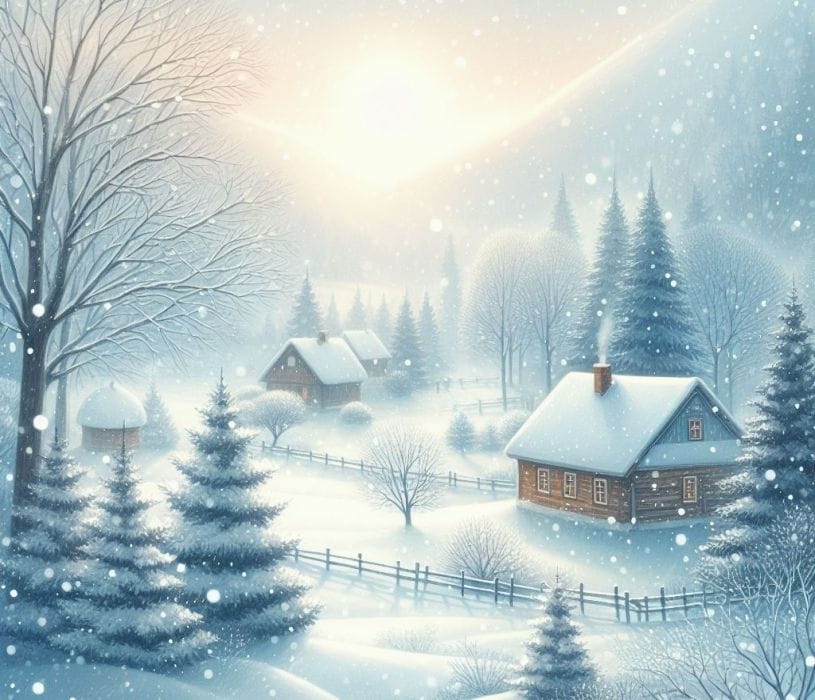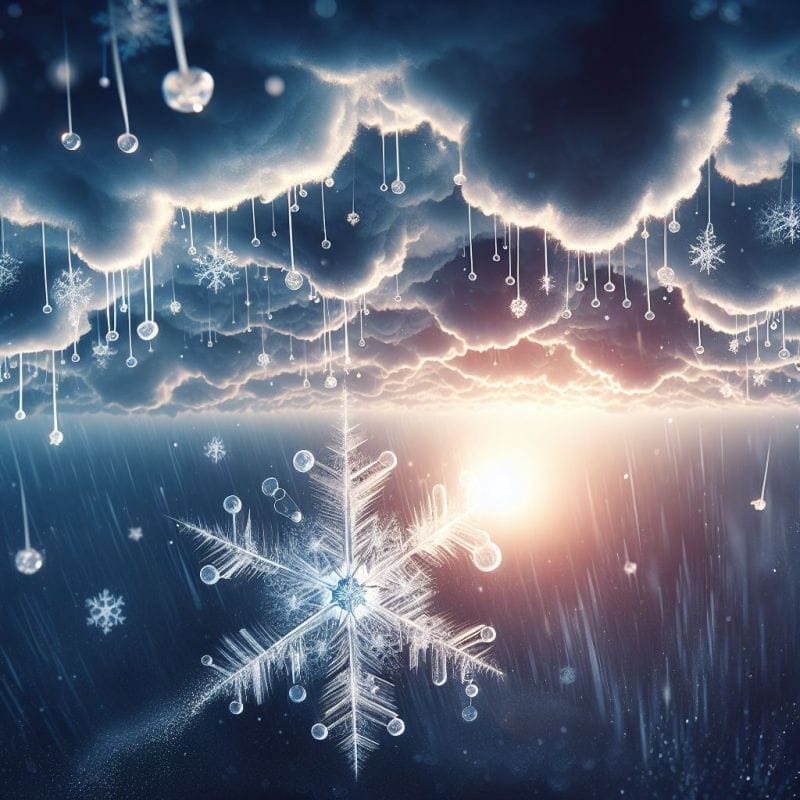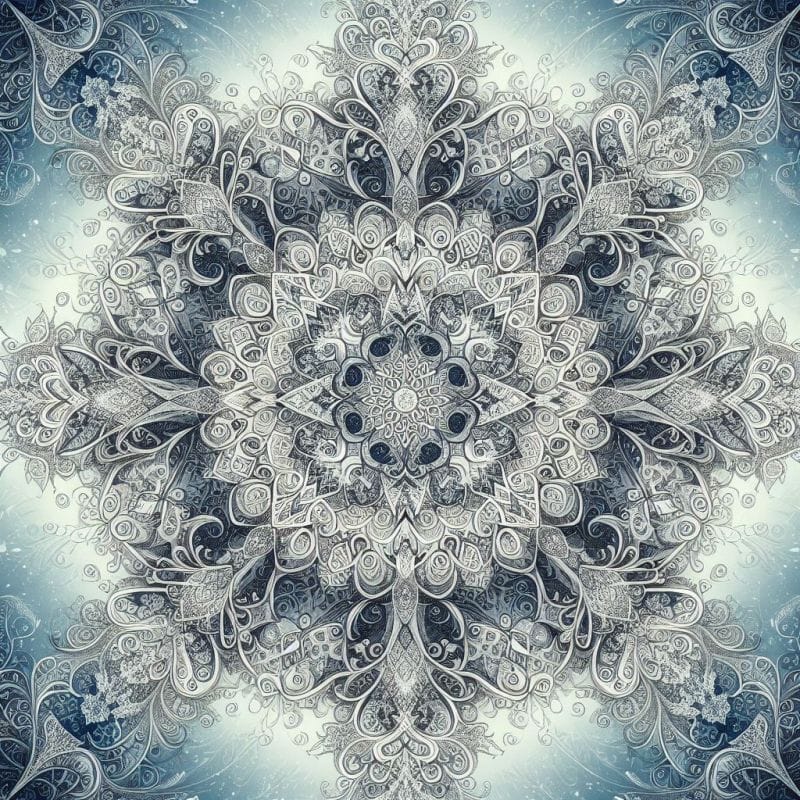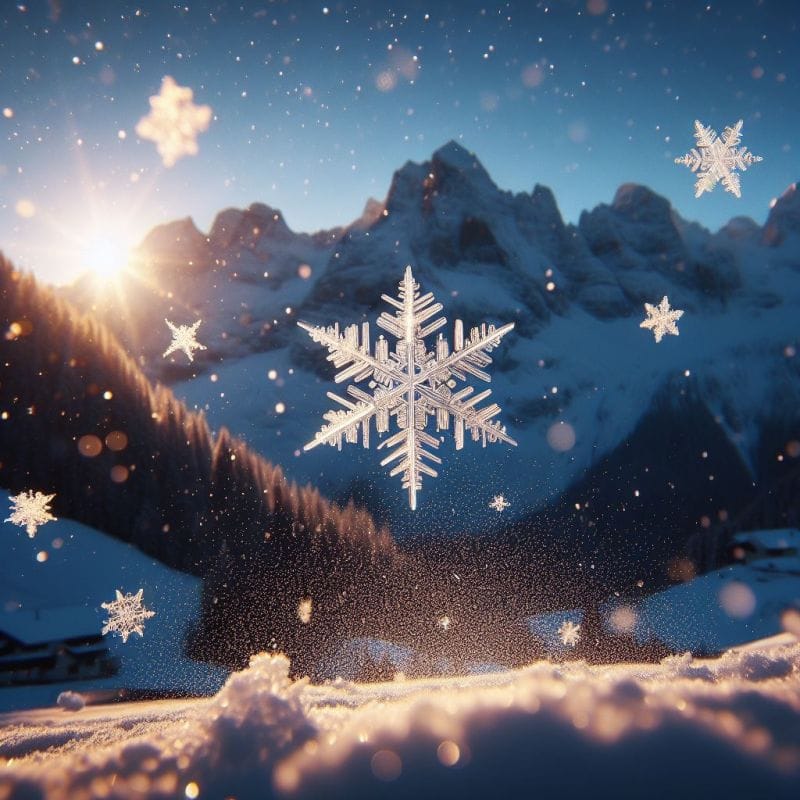
Snowflakes.
A snowflake is a single ice crystal or an aggregation of crystals that falls to the Earth’s surface through the atmosphere. Are snowflakes all the same? Snowflakes are formed from snow crystals formed by the freezing of microscopic water droplets in supercooled clouds. They come in a variety of sizes and shapes. Complex shapes are flakes that move through different temperature and humidity regimes. Each individual snowflake is almost unique in its structure. Snowflakes – when folded into a ball shape, they are called groats. They appear white in appearance, despite being formed from pure ice.
First attempts.
Snowflakes come in a wide range of complex shapes. Which leads to the popular saying: “no two are alike.” The first attempts to find identical snowflakes by photographing thousands of them through a microscope were started in 1885 by Wilson Bentley. He found the wide variety of snowflakes that we know today. He did not succeed immediately – it took two years of experiments. Wilson caught fragile snowflakes on a black velvet surface in such a way that the fragile rays did not break and the photo was taken before the crystal beauty melted.
During his lifetime, Wilson Bentley created more than 5,000 photographs of snowflakes. He proved that no two snowflakes are the same, each of them is unique.
How are snowflakes formed?
The geometry of snowflakes, which so fascinated Wilson Bentley, also interested scientists. With the development of technology, snowflakes began to be photographed under more powerful microscopes, studied and made new discoveries.

Snowflakes are born in clouds of water vapor that the wind lifts high above the ground. There, the vapor turns into ice crystals. They grow around dust particles or tiny particles of soil that are lifted by the wind. The crystals in the cloud are in constant motion. Moved by the wind and they take on their shape.
Complex patterns are formed when small crystals of different shapes grow on the main rays of the snowflake. If the wind lifts the cloud to the coldest layers of the atmosphere. Snowflakes will form there in the form of columnar crystals. And flat hexagonal snowflakes form in lower and warmer clouds.

Falling to the ground, each snowflake changes shape depending on the temperature and wind direction. If it gets colder, it grows new crystals, if it gets warmer. The ice crystals stick together, changing the pattern. And before the thaw, during the flight to the ground. Several snowflakes stick together at once, and then we say that the snow is paw-shaped. It is good to sculpt a snowwoman and snowballs from such wet snow.
Why do snowflakes shine?

Snowflakes sparkle in the sun like precious stones. And sometimes all the colors of the rainbow are visible in this glow. Where does the rainbow come from in a snowflake? A snowflake is a crystal. And a ray of sunlight, falling into a crystal, shows all its colors: it breaks up into rainbow stripes.